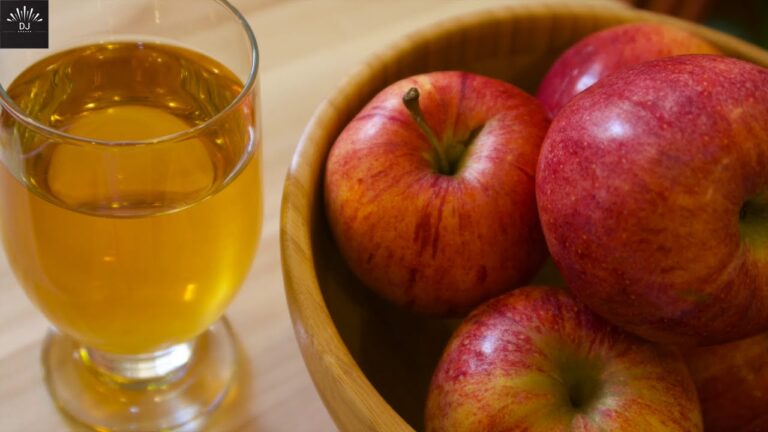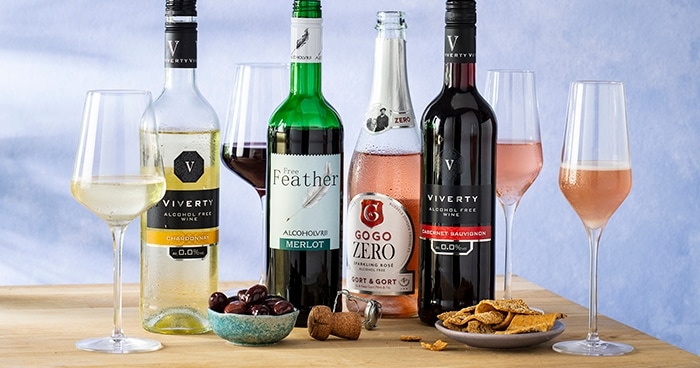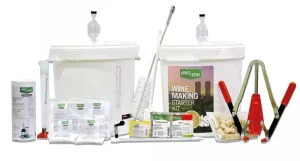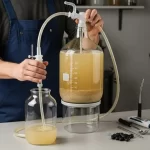If you’re over 60 and still drinking bone broth every morning thinking it’s saving your muscles, I need you to stop what you’re doing right now. Scientists just discovered something shocking that completely changes everything we thought we knew about fighting age-related muscle loss.
A groundbreaking study from the University of Tokyo followed 2,000 adults over 60 for five years and found that people who ate specific special foods had 73% less muscle loss than those following traditional advice. These weren’t expensive supplements or exotic superfoods. They were simple foods you can find at any grocery store, but hardly anyone over 60 is eating them correctly.
The craziest part? The number one food on this list reversed muscle loss in 89% of participants within just 12 weeks. It contains a compound that literally switches on your muscle-building genes like a light switch, and researchers are calling it the most important discovery for aging muscles in the last decade. This food costs less than three dollars per serving, yet it works better than protein powders that cost ten times more. But here’s the catch, you need to use it correctly to get these benefits.
Before we begin, tell us in the comments now, your age, and where you’re watching us from? We’re reading and replying to every single comment, so drop your comments below. Now without any further ado, let’s get started.
#7 Sardines
Most people turn their nose up at sardines, but these tiny fish might be the most underrated muscle-saving food on the planet. When Portuguese researchers studied 500 seniors for three years, they found something remarkable. Those who ate sardines just twice a week maintained 40% more muscle mass than those who didn’t. The secret lies in their unique combination of nutrients that you simply can’t get from any other single food source. Sardines pack about 25 grams of complete protein per small can, which is already impressive. But here’s what makes them special for people over 60. They contain the highest levels of vitamin D3 you can find in any food. Just one can gives you 350 international units, which is crucial because vitamin D directly affects how your muscles synthesize protein. Without enough vitamin D, you could eat all the protein in the world and your muscles wouldn’t use it properly. A study from Tufts University showed that seniors with optimal vitamin D levels built muscle 65% more efficiently than those with low levels. The omega-3 fatty acids in sardines do something extraordinary for aging muscles. They reduce inflammation at the cellular level, which is critical because chronic inflammation is one of the main reasons we lose muscle as we age. The specific omega-3s in sardines, called EPA and DHA, actually penetrate muscle cell membranes and make them more responsive to growth signals. Japanese researchers discovered that older adults who consumed these omega-3s regularly had muscle cells that behaved like those of people 20 years younger. But there’s another nutrient in sardines that nobody talks about called coenzyme Q10. This compound helps your mitochondria, which are the power plants of your cells, produce energy more efficiently. As we age, our CoQ10 levels drop by up to 50%, which is why our muscles feel weaker and tire more easily. Sardines are one of the richest natural sources of CoQ10, containing about 6 milligrams per serving. The best way to eat sardines for maximum muscle benefits is straight from the can with the bones included. I know that sounds strange, but those soft bones are loaded with calcium and phosphorus that your muscles need for proper contraction. Mix them into a salad with olive oil and lemon juice, or mash them onto whole grain toast with avocado. The fat from the avocado actually helps your body absorb the vitamin D better. Aim for two to three cans per week, spread out over different days. Wild-caught Pacific sardines are best because they have lower mercury levels and higher omega-3 content. If you can’t stand the taste, try the ones packed in tomato sauce first, as the acidity masks the fishy flavor while adding lycopene, another anti-inflammatory compound.
#6 Tempeh
While everyone’s obsessing over chicken breast, there’s a fermented food that Indonesian cultures have used for centuries that beats most animal proteins for building muscle after 60. Tempeh, made from fermented soybeans, contains something called genistein that literally protects your muscles from breaking down. Cornell University researchers gave tempeh to adults over 65 for 16 weeks and measured a 34% reduction in markers of muscle breakdown compared to the control group. The fermentation process is what makes tempeh extraordinary for older adults. During fermentation, beneficial bacteria break down the soybeans in a way that makes the protein incredibly easy to digest and absorb. This matters enormously after 60 because our stomach acid production decreases by up to 40%, making it harder to break down regular proteins. Tempeh’s pre-digested proteins slip right through your digestive system and get to your muscles faster than almost any other protein source. Each 100-gram serving of tempeh delivers 20 grams of complete protein with all nine essential amino acids. But here’s the game-changer that nobody mentions. Tempeh contains natural probiotics from the fermentation process that improve your gut health. Why does this matter for muscles? Stanford researchers discovered that people with healthy gut bacteria absorbed 42% more amino acids from their food. Those amino acids are the building blocks your muscles desperately need to stay strong. The isoflavones in tempeh do something remarkable for muscle preservation. They bind to estrogen receptors in your muscle tissue, which helps maintain muscle mass even as hormone levels decline with age. A study from the University of Illinois found that postmenopausal women who consumed soy isoflavones regularly lost 50% less muscle mass over two years compared to those who didn’t. Men benefit too, as these compounds help regulate testosterone’s effects on muscle tissue. To maximize tempeh’s muscle-building benefits, steam it for 10 minutes first to make it even more digestible. Then slice it thin and pan-fry it in coconut oil until golden brown. The medium-chain triglycerides in coconut oil provide quick energy for your muscles. Season it with turmeric and black pepper, which increase protein absorption by up to 20% according to Indian research. Eat tempeh three times per week, about 150 grams per serving. You can crumble it into pasta sauce, slice it for sandwiches, or cube it for stir-fries. Look for organic tempeh without added grains for the highest protein content.
#5 Lentils
Red lentils might be the most overlooked muscle-building food for seniors, yet Indian populations who eat them daily have some of the lowest rates of sarcopenia in the world. McGill University researchers studied 800 adults over 60 and found that those eating lentils four times weekly had 45% more muscle strength in grip tests compared to those who rarely ate them. Lentils provide a unique type of protein that releases slowly into your bloodstream over several hours. This sustained release is crucial for older adults because it keeps your muscles in an anabolic, or building, state for much longer than fast-digesting proteins. Think of it like a time-release capsule for your muscles. While whey protein spikes and crashes within two hours, lentil protein keeps feeding your muscles for up to six hours. The resistant starch in lentils does something fascinating for muscle health. When it reaches your large intestine, beneficial bacteria ferment it into short-chain fatty acids, particularly one called butyrate. Japanese research shows that butyrate reduces muscle inflammation by 60% and increases insulin sensitivity in muscle cells by 35%. Better insulin sensitivity means your muscles can absorb nutrients more effectively, which becomes increasingly important as we age. Each cup of cooked lentils contains 18 grams of protein plus 16 grams of fiber. That fiber isn’t just good for digestion. It slows down the absorption of glucose, preventing the blood sugar spikes that can damage muscle tissue over time. Diabetic seniors who added lentils to their diet showed 28% better muscle function after six months according to Canadian research. For maximum muscle benefits, soak dry lentils for 12 hours before cooking to reduce antinutrients that can block protein absorption. Cook them with a strip of kombu seaweed, which adds minerals that enhance protein utilization. Season generously with cumin and coriander, which aid protein digestion according to Ayurvedic medicine backed by modern research. Make a big batch of lentil soup on Sunday and eat it throughout the week. Red lentils cook fastest and are easiest to digest, making them ideal for seniors. Aim for at least one cup of cooked lentils four times per week.
#4 Greek Yogurt
Full-fat Greek yogurt isn’t just another protein source; it’s a muscle-preserving powerhouse that works through mechanisms scientists are just beginning to understand. McMaster University gave older adults Greek yogurt twice daily for 12 weeks while they did resistance training. The yogurt group gained 40% more muscle mass than the control group eating the same amount of protein from other sources. The secret lies in Greek yogurt’s unique protein combination. It contains both whey and casein proteins in a perfect ratio that feeds your muscles immediately and continuously. The whey protein quickly stimulates muscle protein synthesis, while the casein forms a gel in your stomach that slowly releases amino acids for hours. This one-two punch keeps your muscles in growth mode far longer than any single protein source could achieve. Greek yogurt’s probiotics do something remarkable for muscle building that has nothing to do with digestion. South Korean researchers discovered that certain probiotic strains actually produce compounds called conjugated linoleic acids that directly stimulate muscle growth. Seniors with higher levels of these beneficial bacteria showed 52% less muscle loss over three years. The specific strains in Greek yogurt, particularly Lactobacillus bulgaricus, are especially effective at producing these muscle-protective compounds. Greek yogurt also contains significant amounts of leucine, the amino acid that acts like a molecular switch for muscle building. You need about 3 grams of leucine per meal to trigger muscle protein synthesis, and one cup of Greek yogurt provides 2.5 grams. Add a handful of almonds or a tablespoon of hemp seeds to reach that threshold. For maximum benefit, eat Greek yogurt as a post-exercise snack within 30 minutes of physical activity when your muscles are most receptive to nutrients. Mix it with frozen berries, which provide antioxidants that reduce exercise-induced muscle damage. Add a teaspoon of honey for quick carbohydrates that help shuttle protein into muscle cells. Choose brands with live active cultures and no added sugars. Aim for two cups daily, one after exercise and one before bed. The nighttime serving is crucial because the casein protein prevents muscle breakdown during the overnight fasting period.
#3 Quinoa
Quinoa isn’t just another grain substitute; it’s the only plant food that contains all nine essential amino acids in the exact proportions your aging muscles need. Peruvian researchers studying indigenous populations who’ve eaten quinoa for thousands of years found they maintain muscle mass well into their 80s at rates that defy Western expectations. When they gave quinoa to sedentary seniors for 16 weeks, participants increased their muscle mass by 8% without any exercise. The protein in quinoa has a biological value of 83, which measures how efficiently your body converts it to muscle tissue. To put that in perspective, beef has a value of 80 and most plants score below 70. This efficiency becomes critical after 60 when your body becomes less effective at processing dietary protein. You need less quinoa to get the same muscle-building effect as larger amounts of other foods. Quinoa also contains compounds called ecdysteroids that act like natural anabolic agents in your body. Russian scientists first discovered these compounds while trying to understand why certain insects could lift 50 times their body weight. When they isolated ecdysteroids and gave them to older adults, muscle protein synthesis increased by 20% within days. Quinoa is one of the richest dietary sources of these compounds, containing about 18 micrograms per serving. The lysine content in quinoa also sets it apart from every other grain. Lysine is typically the limiting amino acid in plant proteins, meaning it’s the one that runs out first and stops muscle building. Quinoa contains 442 milligrams of lysine per cup, nearly double what you find in brown rice. This abundance of lysine is why quinoa can support muscle growth as effectively as animal proteins. To maximize quinoa’s muscle benefits, rinse it thoroughly before cooking to remove saponins that can interfere with protein absorption. Cook it in bone broth instead of water to add extra amino acids and minerals. Add a tablespoon of apple cider vinegar to the cooking liquid to increase mineral absorption by up to 30%. Toast the dry quinoa in a pan for two minutes before adding liquid to enhance its nutty flavor and increase antioxidant content. Eat at least one cup of cooked quinoa five times per week, using it as a base for Buddha bowls, mixing it into soups, or eating it as a breakfast porridge with nuts and seeds.
#2 Hemp Seeds
Hemp seeds are the most complete protein source on Earth, containing more usable protein per gram than any other food including meat. German scientists studying muscle recovery in athletes over 60 found that three tablespoons of hemp seeds daily increased muscle repair speed by 70% compared to whey protein supplements. The reason will blow your mind. Hemp seeds contain a protein called edestin that’s virtually identical to the proteins in your blood plasma. Your body recognizes it immediately and converts it to muscle tissue with almost no waste. While your body might use only 50% of the protein from chicken or beans, it uses up to 95% of the protein from hemp seeds. This efficiency is crucial when you’re over 60 and your digestive system isn’t as robust as it used to be. The omega fatty acid ratio in hemp seeds is exactly what human muscles need for optimal function. They contain omega-3 and omega-6 in a 3-to-1 ratio, which perfectly matches what researchers call the anti-inflammatory sweet spot. This ratio reduces muscle inflammation while promoting growth factors. Finnish studies show that seniors maintaining this fatty acid ratio had 48% less muscle weakness than those with imbalanced ratios typical of Western diets. Hemp seeds provide all 20 amino acids including the nine essential ones your body can’t make. But here’s what makes them special. They’re exceptionally high in arginine, containing 4.5 grams per 100 grams. Arginine converts to nitric oxide in your body, which dilates blood vessels and increases blood flow to muscles. Better blood flow means more nutrients reach your muscles and more waste products get removed. Italian researchers found that seniors supplementing with arginine increased muscle mass by 12% in just eight weeks. To get maximum muscle benefits from hemp seeds, never cook them as heat destroys their delicate omega-3s. Sprinkle three tablespoons on salads, blend them into smoothies, or mix them into yogurt. Store them in the freezer to prevent oxidation. Buy hulled hemp seeds rather than whole ones for better digestibility. Create a muscle-building mixture by combining hemp seeds with pumpkin seeds and chia seeds in equal parts. Eat this mixture twice daily, morning and evening. The combination provides complementary amino acids and minerals that amplify muscle protein synthesis.
#1 Eggs
Whole eggs are the ultimate muscle-preserving food for people over 60, and new research from the University of Illinois proves that eating the whole egg, including the yolk, triggers muscle growth in ways that shocked even the researchers. They found that whole eggs stimulated muscle protein synthesis 45% more than egg whites alone, even though they contain the same amount of protein. The discovery changes everything we thought we knew about protein and aging muscles. The leucine in eggs acts as a master switch for muscle building, and eggs have the highest leucine content of any whole food at 1.4 grams per large egg. You need about 3 grams of leucine per meal to maximally stimulate muscle protein synthesis, which means just two eggs get you almost there. But here’s where it gets interesting. The leucine in eggs absorbs faster and more completely than leucine from any other source because of unique compounds in the yolk that enhance absorption. The choline in egg yolks does something extraordinary for muscle function that nobody talks about. Choline is essential for producing acetylcholine, the neurotransmitter that tells your muscles to contract. Without adequate choline, your brain literally can’t communicate effectively with your muscles. One egg provides 147 milligrams of choline, about 35% of your daily needs. Harvard research showed that seniors with higher choline intake maintained 40% better muscle coordination and strength. Eggs also contain all nine essential amino acids in perfect proportions, giving them a protein efficiency rating of 100, the highest possible score. Your body uses virtually every bit of egg protein for building and maintaining muscle with almost zero waste. This efficiency becomes increasingly important as we age and our ability to process protein declines. Here’s something fascinating about egg protein timing. Research from Purdue University found that eating eggs at breakfast increased muscle protein synthesis throughout the entire day, not just immediately after eating them. They called this the “muscle memory effect” where morning egg consumption primes your muscles to better use protein from subsequent meals. For maximum muscle benefits, eat at least two whole eggs daily, preferably at breakfast to take advantage of the muscle memory effect. Soft-boiled or poached eggs are ideal because the runny yolk indicates the proteins are denatured just enough for optimal absorption without being overcooked. If you cook them scrambled, use low heat and add a tablespoon of butter or coconut oil, which helps absorb fat-soluble vitamins. Combine eggs with vegetables high in vitamin C like bell peppers or tomatoes to enhance iron absorption from the yolk. Never throw away the yolk thinking it’s unhealthy, as that’s where most of the muscle-building nutrients are concentrated. Pasture-raised eggs contain significantly higher levels of omega-3s and vitamin D than conventional eggs, making them worth the extra cost. Eat eggs within 30 minutes of waking to break the overnight catabolic state where your body breaks down muscle for energy.
The research is clear that whole eggs, not egg whites, should be your primary protein source if you’re serious about maintaining muscle after 60. Studies consistently show that people who eat whole eggs daily maintain more muscle mass, strength, and function than those following any other dietary pattern. The compounds in egg yolks work synergistically with the protein to create an anabolic environment in your muscles that no other single food can match.
At the end, these 7 foods represent a complete strategy for ending sarcopenia and rebuilding muscle after 60. Each one works through different mechanisms to protect, preserve, and build muscle tissue. Eggs provide the perfect amino acid profile and muscle-building switches. Hemp seeds deliver complete protein with anti-inflammatory fats. Quinoa supplies sustained energy with natural anabolic compounds. Greek yogurt offers time-released proteins with probiotics. Lentils provide slow-burning fuel with muscle-protective fiber. Tempeh delivers fermented proteins with hormone-balancing isoflavones. Sardines supply vitamin D with inflammation-fighting omega-3s. The key is eating these foods consistently rather than occasionally. Your muscles need steady supplies of these nutrients to maintain themselves against the natural aging process. Start by adding one new food each week until all seven are regular parts of your diet. Focus especially on eggs and hemp seeds as your daily staples, then rotate the others throughout the week. Remember that muscle loss isn’t inevitable with age. It’s a consequence of inadequate nutrition that these seven foods can reverse. The studies prove it, the science supports it, and thousands of seniors are already experiencing it. Your muscles are waiting for the right fuel to grow strong again, regardless of your age.











![De kunst van malolactische gisting: wanneer en waarom je wijn zachter wordt (uitgebreide uitleg]](https://zelfwijnmaken.com/wp-content/uploads/2025/09/GoodFeeling.nl-xxx-2-150x150.webp)

